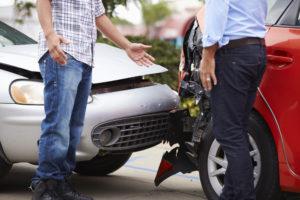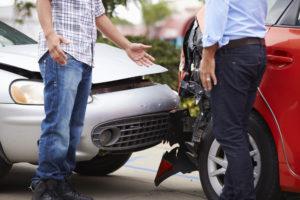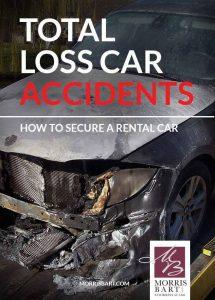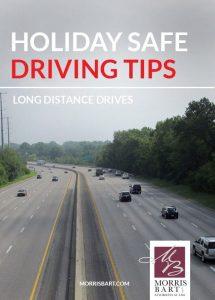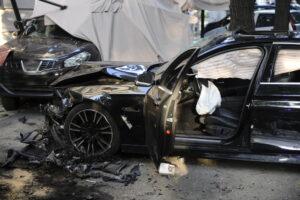
Most car accidents happen near the victim’s home, including in neighborhoods or on rural roads. Intersection and parking lot crashes are also common. Drivers and passengers should take safety precautions, such as using seatbelts whenever they get in the car, regardless of their destination. Injuries can—and do—happen everywhere.
If you or a loved one suffered injuries in a collision caused by another driver, discussing your options with a car accident lawyer is one way to learn about your rights and next steps. An attorney can prepare and file your case and seek compensation for you.
Understanding Where and Why Collisions Occur
After you suffer an injury in a car accident, it’s important to note where the accident occurred. This can help you when it comes to pursuing compensation because the location of your accident plays a crucial role in the evidence-gathering process. It may also be useful to know where the accident happened when determining liability.
Car accidents can happen anywhere. However, statistically, car accidents are more common in the following areas:
Near Home
According to the National Highway Traffic Safety Administration (NHTSA), most fatal accidents occur within 25 miles of the victim’s home. This is because it is the area where you drive the most. The more time you spend on the roads, the higher the chance of experiencing at least a minor crash.
Rural Areas
The NHTSA also reports that more accidents occur on rural roads than in urban areas. In the most recent year studied, the NHTSA found that 54 percent of fatal accidents occurred in rural areas, while 46 percent occurred in urban areas. While there is no confirmed reason for the high percentage of rural fatalities, contributing factors could include less police patrol and higher speed limits in these areas.
Intersections
It probably comes as no surprise that intersections are a common place for collisions. When a driver makes a mistake at a traffic light or stop sign, a collision is sometimes unavoidable. Intersections require drivers to cross paths; these signs and signals regulate this process. Other intersection accidents occur when a driver fails to yield the right of way as required at an intersection.
Parking Lots
With so many vehicles in a small area, accidents are bound to occur in parking lots and garages. Many involve one vehicle hitting an unoccupied, parked car. However, some involve two moving vehicles.
Parking lot accidents sometimes cause less damage than many other types of crashes, but this is not always true. Sometimes, significant injuries can occur. This is especially true for pedestrian victims.
For a free legal consultation, call 800-537-8185
Who Is Liable for Your Car Accident?
Car accidents often occur because of one driver’s carelessness or recklessness. This is true regardless of where the collision happens. Usually, victims can build a case against the at-fault driver and hold them responsible for injuries, expenses, and losses they suffered.
Identifying the at-fault driver, learning about their insurance coverage, and building a compelling case against them are all necessary steps in the process of recovering compensation. When an attorney handles these cases, they aim to show the driver acted negligently by proving:
- The at-fault party owed the victim a duty of care. This means they have a responsibility to keep you safe and obey all traffic laws.
- They breached their duty of care. For example, a driver may have driven above the speed limit or ignored a stop sign.
- This breach of duty was the proximate cause of the collision.
- You suffered damages, such as pain and suffering, and medical expenses.
Using Evidence to Prove the Cause of Your Car Accident
An investigation is necessary to uncover, collect, and analyze evidence. If you work with an attorney, they will handle the evidence-collection process. They may collect evidence such as:
- The police report was filled out by responding officers at the accident scene
- Eyewitness interviews
- Video or photos of the crash from nearby cameras
- Relevant medical records
- Documentation of your damages
A car accident law firm can also gather additional evidence. This could include:
- An accident scene survey
- Accident reconstruction
- Physical and forensic evidence
- Expert testimony
Pursuing Damages Based on Your Car Accident Injuries
Victims of traffic accidents usually have two options for seeking fair compensation:
- Negotiating with the at-fault driver’s auto liability insurance carrier
- Suing the at-fault driver
Victims usually recover compensation through an insurance payout; both sides agree to a settlement amount. Often, when a lawsuit is necessary, the outcome is the same. The case still ends in an out-of-court settlement. Negotiations frequently continue, and the likelihood of a settlement could increase after a victim sues.
If another party caused your accident, you can seek damages no matter where or how the accident occurred. The money won in these cases compensates the victim for their expenses and losses incurred because of the crash. This could include:
- Pain and suffering
- Mental anguish
- Lost life enjoyment
- Reduced quality of life
- Medical treatment and related expenses to date
- Future medical care costs
- Income lost because of time missed at work
- Diminished earning capacity because of lasting injuries
- Property damages, including vehicle repair or replacement
- Miscellaneous expenses
- Wrongful death damages for surviving family members of fatal accident victims
Click to contact our personal injury lawyers today
Talk to a Car Accident Lawyer About Your Crash Case for Free
The Morris Bart law firm provides free initial consultations for accident victims hurt in Louisiana, Mississippi, Alabama, or Arkansas. As a contingency fee law firm, we never ask our clients to pay upfront. We can go to work on your case today.
Contact us now to discuss your next steps with an auto accident attorney from our team.
Questions?Call 800-537-8185
to find a Morris Bart office near you.


